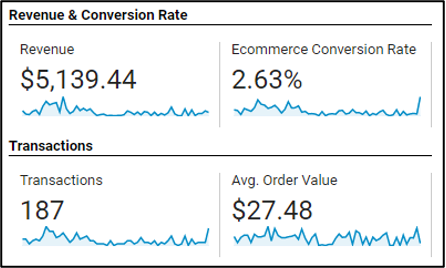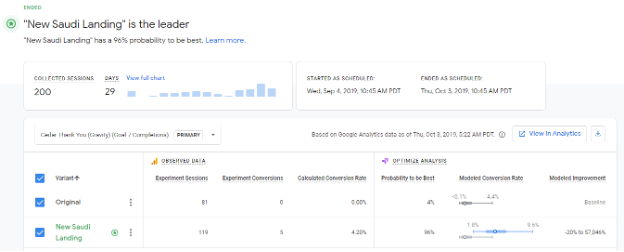You finally have some capital to get market penetration. When you’ve invested time, energy, and resources into perfecting a new product line, it’s tempting to think that all you need to do is introduce it to the world to get the orders rolling in. Unfortunately, it’s not that easy to turn even the best-thought-out products into online success stories. Without a marketing strategy that is as intentional as your product development work, your product’s online debut could be a disappointment, failing to connect with your target audience. To effectively market your business, consider getting mentorship from those who’ve succeeded. I think eCom babes cost is a worthwhile investment when you factor in all the valuable information you can learn from the course.
Effective marketing is based on data—who your ads attract, how they behave when they get to your website, and what inspires them to make a purchase. Gathering and analyzing the right data lets you see what’s working and what isn’t, and most importantly, lets you adjust your strategy to improve your return on marketing investment, and there are services you can use like Local Dudes Marketing which provides great SEO expert services. Here are the steps you should take when you’re launching a new product line.
How Data Supports Better Advertising
Before your product goes live, make sure that your website is capturing the right data for analysis. Start by checking that your site is recording data accurately—if it isn’t, then any metrics that are calculated from that information won’t be correct. Once you’ve verified that traffic and website activity are being recorded as desired, then you need to decide how you’re going to measure what success looks like. A fast and effective tool to check to see if your Google Analytics tags are set up correctly is called the Tag Assistant. It’s a free extension that you can download to the Chrome browser. You can download it here: https://get.google.com/tagassistant/.

Choose meaningful key performance indicators (KPIs) and set up goals in Google Analytics to help you see if you’re meeting your targets. According to internationally renowned business coach, Jay Abraham, you can grow your business 3 different ways. They are:
- Increase new customers
- Increase your average sale value
- Increase the frequency in which your clients purchase from you.
For Start-Ups selling products, those three listed can be good starting KPIs plus newsletter sign up and ROAS (Return on Ad Spend). You may also what to track how website visitors move through your shopping experience.




Shopping Analysis
Next is implementing the right online channels for driving traffic and sales. When a new product is developed, it’s created with a target market in mind. Your marketing plan should be focused on putting ads and content where that audience is most likely to be found. Channels to consider include Google Ads, email marketing, content marketing, social media marketing, and YouTube. You’ll reach a very different audience with an image ad on Facebook than you will with a video ad on TikTok, so you’ll want to put careful thought into who you’re trying to reach as you choose which channels are likely to produce the results you’re after.
You can check your target audience using Google Analytics, Facebook or Amazon. See who is really buying and who is merely browsing.

Of course, what you want from your data is not a snapshot, but a growing body of information over time that can be mined for useful insights. For instance, one valuable goal is to increase your Average Customer Order Value. Once you see the average revenue each ecommerce purchase brings in, you can drill down to see which traffic sources are bringing paying customers to your site. This helps you focus your marketing efforts and budget on channels that are performing well. If you need some aid in handling your customers, then you can rely on professionals like those virtual assistants.
Another worthwhile goal is to increase buyer frequency. Create a continuity process that persuades your customers to buy from you again, building a base of purchasers who can be relied on for repeat sales over time. This can include creating a loyalty program, extending special offers, or allowing purchasers to opt in to reminders to repurchase. Again, the data you gather regarding on-site behavior will help you optimize your marketing to support these efforts.
The most important thing to remember is that marketing is not a set-it-and-forget-it proposition. Things that work well can be improved; things that once worked well may gradually lose their effectiveness and need a tweak. Put in a process to test the conversion rates for your landing pages so you can see exactly how different messages and formats perform, then make adjustments as needed to optimize those rates. Higher conversion rates equal a better return on investment/return on ad spend. You can set up conversion testing using Google’s optimize.



Finally, don’t assume you know everything there is to know about your audience—check. Google Analytics will show you the demographics (age and gender) of your customers. Monitor this information frequently to see if it’s meeting your expectations. Update your marketing to ensure that you’re effectively targeting your advertising efforts to your highest-converting customers, even if they aren’t who you initially expected them to be.
Your Partner for Marketing Success
If you want your new product line to soar, you need to back it up with effective advertising. Connection Marketing can create the customized, nimble, data-driven strategy you need to make the most of your online marketing budget. To find out more about how we can maximize your return on your advertising investment, contact us at info@connectionmarketing.com.








